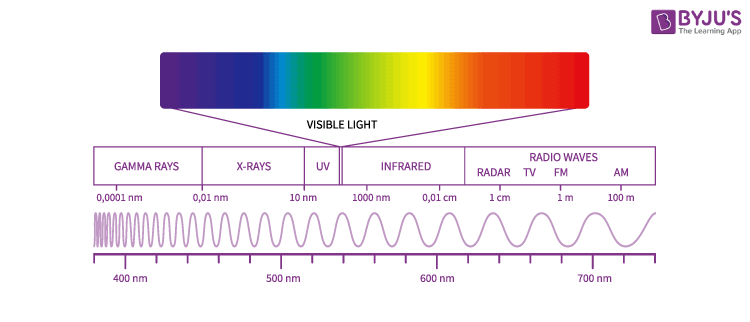Many fundamental concepts lay the foundation for studying Physics, such as temperature, pressure and density. The force applied on the object per unit area perpendicularly over which force is distributed gives the pressure. Pressure is given by the formula:
P=F/A
Where,
P is the pressure
F is the magnitude of the force
A is the surface area in contact
The SI unit of pressure is Pascal (Pa), and pressure is a scalar quantity since it has only magnitude and no direction.
In our previous sessions, we learned about Absolute Pressure, Atmospheric Pressure, Differential Pressure, and Gauge Pressure. In this article, let us now know more about radiation pressure.
| Table of Contents |
What is Radiation?
Before knowing what radiation pressure is, let us understand what radiation means. Radiation is defined as energy or particles from a source that travels through space or other mediums. Radiation is of two types: ionizing radiation and non-ionizing radiation.
The various types of radiation are Gravitational Radiation, Electromagnetic radiation, Acoustic Radiation, and Particle Radiation.
Radiation consists of packets of radiant energy called photons, or quanta. Electromagnetic radiation is an electric and magnetic disturbance, traveling through space at the speed of light. Electromagnetic waves include radio waves, X-rays, infrared, (visible) light, microwaves, gamma rays, and ultraviolet. All these waves together constitute the electromagnetic spectrum.
The electromagnetic spectrum is as shown below:

Radiation Pressure
The concept of radiation pressure arises due to the exchange of momentum between the electromagnetic field and the object. This force is seen since electromagnetic waves carry transport momentum.
Radiation pressure is defined as the mechanical pressure that is applied on any surface due to the exchange of momentum between the electromagnetic field and the object. Here, the transfer of momentum takes place when photons strike the surface of the object. Radiation pressure on any surface depends on the nature of the surface and the intensity of light used.
If the total energy transferred to a surface is U in time “t”, it can be shown that the magnitude of the total momentum delivered to this surface (for complete absorption) is,
p= U/c
A simple example to illustrate radiation pressure is when the rays from the sun strike our hands, they get warm. As we know, the electromagnetic waves transfer momentum, your hands get warm because c is very large, the amount of momentum transferred is extremely small, and hence you cannot feel the pressure. This happens because the energy is being absorbed by the surface of the hands from the electromagnetic waves.
Nicols and Hull, American scientists in 1903, measured the radiation pressure of visible light. It was found to be
Radiation Pressure Formula
Celestial objects are influenced by radiation pressure. We may not feel pressure in all situations, but for celestial objects like stars, photons are extremely important since large amounts of photons are emitted in the form of radiation. Consider the blackbody condition seen in a star, the radiation pressure is proportional to the fourth power of temperature and is given by the equation:
When electromagnetic radiation of an intensity 𝐼 is incident on a perfectly reflective surface, the radiation pressure 𝑃 exerted on the surface is given by:
Where, c = speed of light
Remember:
Radiation Pressure is given by the formula,
where α is the coefficient of reflection of the surface.
For a completely reflecting surface.
For a completely reflecting surface.
The radiation pressure is independent of the wavelength of incident light and depends on the nature of the surface on which light falls.
See the video below and know about black body radiation.

Hope you have learned in detail about radiation pressure. Stay tuned to BYJU’S to know about various Science and Math concepts.
Frequently Asked Questions – FAQs
What is radiation?
Energy or particles travelling from a source through space or other mediums is known as radiation.
What are the types of radiation?
The following are the types of radiation:
- ionizing radiation
- non-ionizing radiation
What is the radiation pressure exerted when an electromagnetic radiation is incident on a perfectly reflective surface?
What is the formula to calculate the pressure?
P=F/A
Where,
p is the pressure
F is the magnitude of the force
A is the surface area in contact.
When the radiation pressure is doubled?
Radiation pressure is doubled when the radiation is reflected.
Comments